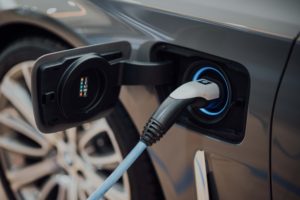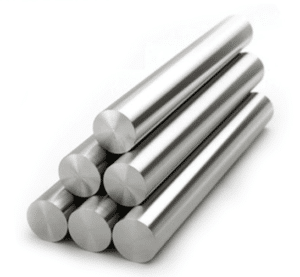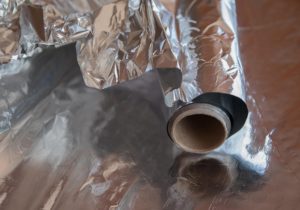Electric cars are becoming more popular each year.
Many people are asking what precious metals are used in electric cars?
What components of the car need to be made of precious metals in order for the car to run?
Here is a brief overview of what metals are used and why they are necessary.
Gold
Most people think of gold when they hear the word “precious metals.”
Gold is very dense and it has a high heat conductivity rating.
Electric cars, such as the Tesla Model S use an alloy that contains 65% (18ct) gold, 17% silver and 2% copper to make up the entire connector.
While this does add on to the price tag, these connectors are also more durable than traditional steel or brass ferrules.
Platinum
Platinum electrodes last longer but cost more than standard nickel electrodes which you would find in your standard welding rod.
As we mentioned before, some electric car manufacturers, such as Tesla, use a small amount of platinum to make their electrodes.
Silver
Silver is a great conductor and it has a very low resistance rating.
However, silver can be expensive and difficult to work with if you are manufacturing car batteries on a large scale.
Because of this, there isn’t that much silver used in electric cars specifically for their batteries.
Tesla has been known to use industrial-grade 100% recycled silver wiring to limit the amount of silver needed, but other automobile manufacturers rely on different types of metals.
Palladium
Palladium is a metal that can be alloyed with platinum, gold and a few more.
This will not, however, increase the beneficial properties of those metals or decrease their negative ones.
However, it can give some new features to them.
For example, using palladium as an alloy can add some high temperature properties to gold and platinum.
The best known alloy which contains palladium is the white gold, often used in making wedding rings.
Palladium has a few important uses, such as catalysts in chemical reactions, hardening other metals and components for creating fuel cells.
Palladium can be added to copper alloys which are used in electric cars.
The main purpose of palladium is to improve the conductivity of those alloys.
Conductive coils are being added to batteries to allow higher current capacity from them.
Palladium can also be added to permanent magnets, allowing less rare metals such as iron and nickel to be used inside these magnets.
In this way, a similar effect will be achieved by producing less expensive magnets which have the same properties as those made from palladium.
Palladium is a very expensive metal, but it can save other metals in the process of being used in electric cars, allowing them to become cheaper and more available for a wider range of people.
Nickle
Nickel is a great conductor and has a low resistance rating.
It is also a very cheap material to use when manufacturing electric vehicle batteries on a large scale.
Rather than using two different metals such as copper and nickel which would increase the weight of the car, some automobile manufacturers will use this metal in their positive electrodes because it can be combined with lithium.
The downside to this type of battery is that it degrades after around 1,000-5,000 cycles (depending on how you drive) and requires more maintenance than other types of batteries.
If we were designing an electric car from scratch, we might consider using aluminium foil or even copper wire for our electrodes if we knew the battery was going too quickly.
That way, we wouldn’t have to worry about replacing our electrodes after a few years.
Aluminum
Aluminum foil is used in the manufacture of some electric car batteries, however aluminum foil isn’t very conductive and can be difficult to work with.
Tantalum
This metal has good heat conductivity, is able to withstand high temperatures and lasts a long time when combined with other metals such as nickel.
However, they are expensive, not cheap, which means they aren’t commonly used in cars made for large-scale production.
Unless extensive research happens beforehand suggesting that using these types of materials would be beneficial or cost effective compared to other materials.
Copper
Copper is a very good conductor and is commonly used in the manufacture of electric car batteries.
However, it has lower melting points when compared to other metals such as aluminum and titanium.
This makes it more difficult to work with when you are trying to form electrodes that can be shaped into cylinders or squares rather than flat sheets.
If we were designing an electric car from scratch, I would probably choose copper for my electrical connectors, because they seem easier to work with by hand if you don’t have access to industrial welding equipment.
Copper is also the cheapest material when compared to other precious metals.
Titanium
Titanium melts at a relatively low temperature and will hold up against harsh weather conditions and is also very hard.
It is also a good conductor which makes it a prime candidate for use in the manufacture of electrodes for electric car batteries.
However, titanium is expensive and can be difficult to work with because you need industrial welding equipment to fuse the metal together and forming it into spokes or cylinders isn’t easy by hand.
The Bottom Line
The precious metals used in electric cars are important because they provide a conductive path for the charge.
They also transfer heat from the battery to the outside of the car and keep it cool, which is crucial for safety reasons.
The precious metals used in electric cars are an important topic and we want to help you understand why.
We’ll be honest, this list may change over time as new technologies are developed that make use of different materials but these should give you an idea about how much work goes into building one vehicle.




